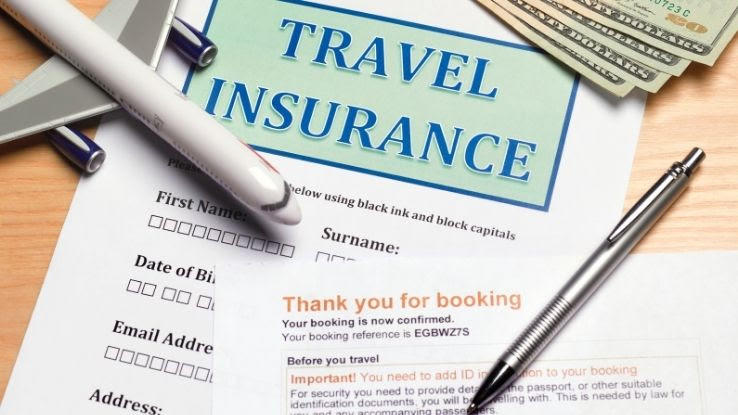Not known Facts About Pacific Prime
Not known Facts About Pacific Prime
Blog Article
The 7-Second Trick For Pacific Prime
Table of ContentsThe smart Trick of Pacific Prime That Nobody is Talking AboutPacific Prime Things To Know Before You BuyThings about Pacific PrimePacific Prime Can Be Fun For AnyoneThe Ultimate Guide To Pacific Prime

This is because the information were gathered for a period of strong financial efficiency. Of the estimated 42 million individuals who were without insurance, just about regarding 420,000 (regarding 1 percent) were under 65 years of age, the age at which most Americans end up being qualified for Medicare; 32 million were adults between ages 18 and 65, around 19 percent of all grownups in this age group; and 10 million were youngsters under 18 years of age, regarding 13.9 percent of all kids (Mills, 2000).
These price quotes of the number of persons uninsured are created from the yearly March Supplement to the Current Population Survey (CPS), performed by the Demographics Bureau. Unless otherwise kept in mind, nationwide quotes of individuals without wellness insurance and percentages of the population with different type of coverage are based on the CPS, the most commonly made use of source of quotes of insurance policy protection and uninsurance prices.
Little Known Facts About Pacific Prime.

Still, the CPS is specifically helpful since it generates annual quotes relatively promptly, reporting the previous year's insurance policy coverage estimates each September, and due to the fact that it is the basis for a regular collection of estimates for more than two decades, enabling analysis of fads in insurance coverage gradually. For these reasons, as well as the extensive use the CPS in various other research studies of insurance coverage that exist in this report, we rely upon CPS price quotes, with restrictions noted.

The estimate of the variety of without insurance individuals broadens when a populace's insurance standing is tracked for numerous years. Over a three-year duration beginning early in 1993, 72 million people, 29 percent of the united state population, lacked insurance coverage for a minimum of one month. Within a single year (1994 ), 53 million people experienced a minimum of a month without insurance coverage (Bennefield, 1998a)
6 out of every ten without insurance adults are themselves employed. Although functioning does enhance the likelihood that and one's family participants will have insurance coverage, it is not a guarantee. Even members of families with 2 full-time wage income earners have nearly a one-in-ten possibility of being uninsured (9.1 percent uninsured price) (Hoffman and Pohl, 2000).
Pacific Prime for Dummies
New immigrants represent a significant proportion of individuals without wellness insurance policy. One analysis has actually connected a significant part of the recent development in the dimension of the U.S. uninsured populace to immigrants that arrived in the country between 1994 and 1998 (Camarota and Edwards, 2000). Recent immigrants (those who involved the United States within the previous four years) do have a high rate of being without insurance (46 percent), however they and their youngsters make up simply 6 percent of those without insurance coverage country wide (Holahan et al., 2001).
The partnership in between medical insurance and access to care is well established, as documented later in this chapter. Although the connection between medical insurance and health results is neither straight nor easy, a comprehensive clinical and health and wellness solutions study literary works links health and wellness insurance coverage to better accessibility to care, much better high quality, and enhanced personal and population health status.
Levels of evaluation for checking out the impacts of uninsurance. This discussion of health and wellness insurance policy coverage focuses largely on the U.S. populace under age 65 since practically all Americans 65 and older have Medicare or various other public insurance coverage. Moreover, it focuses especially on those without any type of health insurance policy for any length of time.
The Main Principles Of Pacific Prime
The issues dealt with by the underinsured remain in some areas comparable to those encountered by the uninsured, although they are normally less severe. international travel insurance. Uninsurance and underinsurance, nonetheless, entail noticeably different policy issues, and the approaches for resolving them might differ. Throughout this study and the 5 records to adhere to, the primary focus gets on individuals without any health and wellness insurance policy and hence no assistance in spending for healthcare past what is offered with charity and safety and security web organizations
Medical insurance is a powerful element affecting invoice of treatment since both patients and medical professionals react to the out-of-pocket cost of services - https://www.openlearning.com/u/freddysmith-sba6sp/. Medical insurance, nevertheless, is neither required nor enough to obtain accessibility to medical services. However, the independent and straight impact of medical insurance this post protection on accessibility to health and wellness services is well established.
Others will acquire the health treatment they need also without medical insurance, by spending for it expense or seeking it from carriers who supply care cost-free or at extremely subsidized prices. For still others, health insurance coverage alone does not guarantee invoice of care as a result of various other nonfinancial barriers, such as an absence of health treatment service providers in their area, minimal accessibility to transportation, illiteracy, or linguistic and social differences.
The Ultimate Guide To Pacific Prime
Official study about uninsured populations in the United States dates to the late 1920s and early 1930s when the Committee on the Expense of Treatment created a collection of records concerning funding physician office sees and hospitalizations. This concern came to be significant as the varieties of clinically indigent climbed during the Great Anxiety.
Report this page